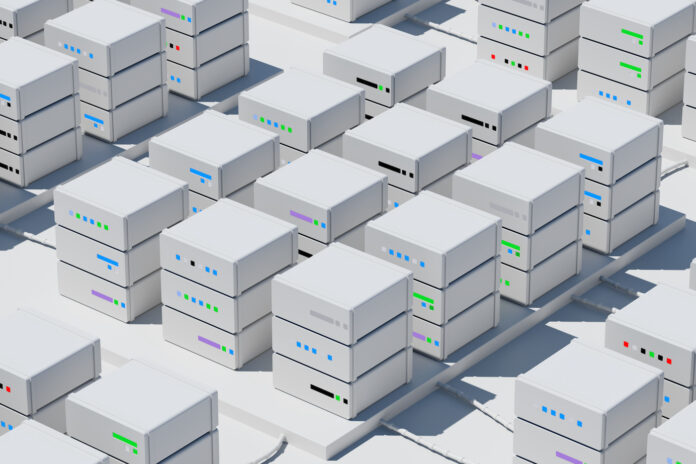In the increasingly competitive retail sector, constructing the right dispensary tech stack is mission-critical. Your dispensary’s technical infrastructure, along with data management and use, can create a significant competitive advantage when carefully selected and strategically integrated. On the other hand, a haphazardly assembled tech stack without proper attention to integrating multiple systems can severely hamper operations, stemming the flow of revenue and needlessly limiting opportunities for growth.
Unfortunately, there’s no such thing as “the best” setup. Identifying the optimal technology requires mapping out your customer life cycle. Start with the buyer’s journey, whether it begins with entering your store or visiting your website. Put yourself in your customers’ shoes and consider the experience you’d like to have. You would want easy purchasing, efficient order fulfillment, and minimal time spent waiting in line. You’d expect a stable, fast website that works hand in hand with the store’s inventory management. You’d appreciate a loyalty program that offers significant rewards without demanding much from you in return.
The goal in assembling your retail tech stack isn’t to select the best individual tools; it’s to create the best possible system for your specific circumstances. Not all dispensaries are created equal, and the technical infrastructure that makes sense for an extensive multi-store operation likely isn’t feasible for a smaller shop or start-up business. Grounding your choice of tech tools in the perspective of your customers, while also taking into account the needs and budget of your business, will help guide you as you compare and contrast the available software, platforms, and services.
Take a look at our handy guide to retail tech-stack providers.
Point-of-sale systems
A robust point-of-sale (POS) system is the cornerstone of a well-functioning dispensary. The POS system is used to track products from arrival at your store or warehouse to the moment of purchase. An effective POS offers detailed inventory management, enabling efficient order fulfillment and ensuring items are removed from available stock promptly. Your POS should work well with state-mandated compliance-tracking systems like BioTrack or Metrc. It also should work seamlessly with your customer relationship management (CRM) and loyalty-program software, easily allowing you to establish buy-one-get-one offers, senior discounts, markdowns for returning customers, incentives for new customers, and other promotional campaigns.
If you have ambitions beyond running a single dispensary, your POS system should be scalable to support multi-store inventory management and flexible enough to grow with your business. The POS should support management of more than one store at a time and offer easy compliance with varying regulations and laws across multiple markets.
If you haven’t already optimized your dispensary’s POS system, upgrading could result in increased sales, improved insight into sales and inventory data, and a better customer experience both in-store and online. Customers who know they can rely on your dispensary to fill their orders quickly and accurately are more likely to return. They’re also more likely to recommend your dispensary to their friends, providing valuable word-of-mouth marketing.
Cashless payments
According to Aeropay, millennial and Gen Z cannabis consumers account for 63 percent of all tracked sales in the United States. Meanwhile, a Tallwave survey showed consumers between the ages of twenty-five and thirty-five are the most likely to have made a digital payment, with 80 percent of respondents reporting they have made such purchases. An expressed preference for digital payments over cash transactions among younger consumers is nothing new: A 2017 survey by LivePerson found 61.8 percent of global consumers between the ages of eighteen and thirty-four are so comfortable making digital purchases they would “choose to leave their wallet at home instead of their phone.”
Taken together, these statistics suggest any dispensary not offering a digital purchasing option of some kind is failing to meet the expectations and preferences of an important slice of its customer base. Put bluntly, dispensaries that require customers to pay with cash are needlessly cutting into their sales, putting their employees at risk, and inconveniencing their customers.
According to data from digital infrastructure providers like Treez, dispensaries that embrace cashless payment options see increased revenues and improved customer retention. Convenience is a major factor for consumers of any product, and the data shows many consumers are willing to drive farther to shop at dispensaries that offer cashless purchase options.
Automated clearing house (ACH) transactions are one such option. With ACH, customers link their bank account to their customer profile, allowing them to transfer funds from their bank account to make purchases seamlessly. Typically, consumers can use ACH for in-store purchases, online orders, and pre-orders for pickup. ACH generally is favored by customers who make larger purchases or who tend to return to the same store repeatedly. It can be a bit cumbersome for walk-in customers, so dispensaries should offer other cashless options as well.
Cashless ATMs are a payment workaround solution in which customers withdraw funds from their bank accounts using their debit cards. Late last year, several major ATM transaction providers shut down cashless ATM transaction processors, and thousands of dispensaries were left scrambling for an alternative. The method remains in use at a handful of dispensaries, but most now opt for more stable means of payment.
Another all-but-defunct payment workaround, PIN debit, allowed customers to use their debit cards just as they would in any other retail establishment—by providing their personal identification number to authorize transactions. Until late July, PIN debit was popular among dispensary operators and customers alike because it was easy to use, felt familiar, and did away with most of the risk of fraud and chargebacks. But on July 26, Mastercard notified payment processors and banks they must immediately cease processing payments for cannabis businesses. “The federal government considers cannabis sales illegal, so these purchases are not allowed on our systems,” the card network told The Washington Post.
Rather than trying to skirt the rules set by credit card networks, some payment solutions providers have begun processing credit card transactions through “closed-loop” systems where processors accept credit card payments in exchange for tokens or credits consumers then use to pay the merchant.
Closed-loop systems are familiar to consumers who shop with major mainstream brands like Starbucks, whose use of closed-loop debit cards has contributed greatly to the company’s impressive revenue over the years.
Ecommerce solutions
While it’s certainly possible to operate a dispensary without an online presence, doing so would be ill-advised. Consumers expect to be able to order goods, and preferably complete entire transactions, online.
Showcasing your menu online provides consumers with a convenient way to browse your inventory and offers an ideal environment for promoting special offers, introducing potential members to your customer-loyalty program, and collecting valuable data from website visitors. Dispensaries with online stores enjoy greater geographic reach, higher average order values, and enhanced brand loyalty compared to those with only a brick-and-mortar presence.
Some key elements to consider when choosing an ecommerce solution include data ownership, website performance and speed, flexibility and customizability, and ease of integration with other elements of your tech stack.
Companies can choose between two ecommerce options: a dedicated system they own and operate, or a “marketplace” solution akin to Amazon that hosts numerous third-party sellers under an umbrella brand.
While a marketplace solution offers certain advantages, including exposure to existing traffic and the visibility that comes from being part of a platform with top placement in search engine results for commonly used search terms, making your brand stand out in such a venue can be difficult. The umbrella brand has every incentive to increase consumer awareness of and loyalty to its own marketplace rather than drive consumers toward individual vendors.
Operating in a marketplace also generally means the company that operates the platform owns the data collected from consumers. The amount of data shared with product brands and dispensaries varies from one marketplace to the next, and without greater transparency than the marketplaces generally offer, it’s difficult to say what sort of potentially useful information may be omitted.
Consumer data isn’t merely a set of statistics, demographics, and contact information; it’s the lifeblood of dispensaries’ marketing efforts. Collecting data from customers enables better audience targeting and more effective tailoring of marketing materials. Without this data, it’s far more difficult to establish fruitful relationships with customers and craft a marketing strategy that keeps them coming back.
A dedicated ecommerce solution allows the dispensary to own all the data, enabling stronger customer relationship management and providing complete control over the way consumers perceive everything from operation to customer service and branding. Instead of being one face among many in a large marketplace, the dispensary’s website becomes the focus of users’ attention.
Dedicated ecommerce solutions also can benefit the bottom line. According to a Treez whitepaper published earlier this year, consumers who shop on a dispensary’s dedicated website tend to make larger and more frequent purchases than those who buy through other digital waystations, including large marketplaces.
Data and analytics
Every interaction you have with a customer, from the moment they first visit your website or physical store until they pick up their order, offers an opportunity to collect important, useful data. But collecting information is just the beginning. For that data to have real value, it must be contextualized and rendered in a way that enables managers to identify patterns and spot correlations between data points.
Enter analytics, a term tossed around in contexts ranging from professional sports to microeconomics. For a dispensary, analytics software demystifies the raw data your systems collect and presents it in an easily understood way using familiar visual representations like charts and graphs. When applied correctly, analytics help take much of the guesswork out of dispensary operations, enabling owners and managers to track the results of promotional campaigns and discount offers and use those results to inform future decisions.
In addition to carefully considering your options in analytic tools, you also need to consider which types of data you want to collect. Broadly speaking, there are four types of consumer data collected by digital marketers: third-party, first-party, second-party, and zero-party. Each variety has utility, and understanding the difference between them is important when deciding which to prioritize for your business.
Third-party data is the easiest to come by because it can be purchased, but it also provides the least information about individual customers. This type of consumer data generally includes publicly available information like age, gender, employment, and general audience behavior.
A good example of first-party data is the information collected from customers who visit your website. This information can include a great deal about their activity on the site, including what they clicked, searched for, signed up for, purchased, or even merely viewed. First-party data can tell you significantly more about individual customers than other types of data.
Second-party data essentially is first-party data you don’t collect directly. Rather, the data is purchased from another company that has sourced it on your behalf. If a store sells its customer-loyalty data to a credit card company, for example, then the credit card company has purchased second-party data.
A data type that has become highly valued by digital marketers in recent years, zero-party data requires customers to offer specific information voluntarily and directly. This helps the platform, store, or brand understand the customer in greater depth and cater to their specific preferences. A simple example of zero-party data is when a customer answers a post-purchase question like “How did you hear about our dispensary?” or “Do any of these related product categories interest you?”
Zero-party data comes directly from the customer, so it has the potential to tell you the most about that individual. It’s harder to collect than first-party data, which can be collected passively by tracking user behavior. But when it comes to data collection, the question isn’t which type you should collect; it’s how you use data from each category to better understand your customer base and deliver an optimal experience.
Customer engagement
There’s a reason nearly every modern business offers a loyalty program: Loyalty programs work, but strategically sound loyalty programs work best.
Industry data indicate the average loyalty program member spends 15–35 percent more per purchase than non-members. However, 40 percent of new loyalty program members make an initial purchase and then never return to the store.
A good loyalty program is nimble enough to respond quickly to customers’ evolving tastes and offer a variety of incentives, allowing you to appeal to consumers with varied priorities and preferences. A simple points-based system that offers discounts in proportion to purchases might be all some customers desire, but your loyalty program should facilitate customization rather than commit you to a one-size-fits-all approach.
Whatever form your loyalty program takes, make signing up for the program as simple as possible. Don’t require your customers to provide a lot of information to join, particularly if you anticipate people signing up while they’re checking out. A lengthy signup process won’t just deter new members from joining; it also will slow things down for the next guest in line.
Another crucial point to consider when selecting a loyalty program is compatibility with existing CRM and POS systems, along with other elements of your tech stack. Seamless integration goes a long way in enabling the smooth operation of your dispensary. Clunky, inefficient, or buggy integration will have the opposite effect.














[…] and managing new collaborative marketing efforts between businesses that don’t use the same tech stack. Establish a robust reporting system accessible by all stakeholders, conduct A/B testing for […]
[…] businesses require fast, reliable, and compliant tech-stack connectivity. But with the industry still in its infancy, there’s a long road ahead to create […]
[…] where and how much they invest. One area that has been picking up steam over the past few years is technology, including software and services that help companies perform daily operations (point-of-sale […]
[…] cannabis market’s current aesthetic was influenced by two distinct themes: high-tech, Apple-like minimalism and a bohemian head-shop vibe that felt more legacy than legal. Serra’s […]
[…] era. The alacrity with which businesses have embraced automation, artificial inteligence, and digital technology simultaneously is both astounding and […]
[…] regulations, technology platforms, and other infrastructure that have enabled hemp companies to ship their products across state […]
[…] segment and market effectively, brands and retailers must invest in a complete retail-focused tech stack that prioritizes personalized recommendations based on customer preferences and purchase history. […]
[…] POS, payments, and more. We partner with best-in-class solutions for other services and believe in optionality when it comes to tech stacks,” Johnson […]
[…] of money,” Deep Roots’ Mao said. “This group is bargain-hunters, but they’re also the most tech-savvy. Sending offers, deals, and incentives via email will be the most effective strategy with this […]
[…] have been significant barriers to its widespread acceptance and safe use. In this context, AI-powered platforms emerge as pivotal tools, providing tailored educational content that aligns with the varied learning styles and existing […]
[…] you’ll find with most established business software, there are many good SEO software options on the market and personal preference plays a big role in […]
[…] Compliance was nothing like it is today. When we think of compliance in 2023, we envision a robust technological system form-fitted to match each state’s requirements. In 2016, though, “compliance” primarily meant […]
[…] small, dank outposts on the fringes of town, today’s dispensaries are bright, well-furnished, technology-forward operations staffed by meticulously trained professionals. From Sparc in mg’s very first issue through Gotham […]
[…] going on behind the scenes. When you’re creating your business’s marketing mix, there are various tools to consider and implement to keep key stakeholders interested and your business growing. Not all of these tools […]
[…] we’re in a place where we have a very good process of budget forecasting, financial reporting, and organizing all the data. Every department knows exactly what their budget is from month to month, the budget for the year, […]
[…] What’s Your Ideal Retail Tech Stack? […]